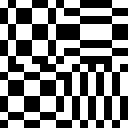With the emergence of internet platforms and apps, the networked image arrives.
The networked image is subjected to not just Terms of Service (ToS), that can lead to censorship and filtering, it is also transcoded when uploaded (and sometimes even when reposted).
A protocol that alters the image in minor and often opaque ways (in terms of meta data alteration, cropping, re-compressing and user edits and additions). However, through iterative interactions of up and download, the image gradually degrades into a 'poor image’, riddled with trace evidence of its moves through the network.
At stake are the image’s authenticity, authorship, control and finally its legibility.
Memes, a type of networked image, start celebrating the poor image by purposefully ‘deep frying’ it.
The networked image is subjected to not just Terms of Service (ToS), that can lead to censorship and filtering, it is also transcoded when uploaded (and sometimes even when reposted).
A protocol that alters the image in minor and often opaque ways (in terms of meta data alteration, cropping, re-compressing and user edits and additions). However, through iterative interactions of up and download, the image gradually degrades into a 'poor image’, riddled with trace evidence of its moves through the network.
At stake are the image’s authenticity, authorship, control and finally its legibility.
Memes, a type of networked image, start celebrating the poor image by purposefully ‘deep frying’ it.

////////////////////////////
Behind White Shadows && Pique Nique Pour les Inconnues
is a research project undertaken during my 2019 JMAF residency in Tokyo, Japan.
Behind White Shadows && Pique Nique Pour les Inconnues
is a research project undertaken during my 2019 JMAF residency in Tokyo, Japan.
The encounter with the DCTs shifts the Angel’s focus from mapping the material of compression to researching genealogies of resolution.
She organizes a Pique-Nique Pour les Inconnues, a conference call for all forgotten and unknown faces (shadows) featured on color calibration test cards. When the participants assemble on her desktop, the Angel quickly realizes that the group consists of almost only Caucasian women; digital descendants of Kodak’s “Shirley Card,” the industry’s default reference for skin-tone balance since the 1950s.
Together, they discover how the use of predominantly Caucasian faces for color calibration has profoundly influenced the governing standards of visual representation, failing to accurately capture and depict a more diverse spectrum of skin tones.
The Angel and the faces of color calibration reflect on how these biased standards have narrowed the range of both image capture and render. They conclude that standardisation not only organises what can be seen; it also decides what will remain unrenderable, invisible, and therefore compromised.
The gathering evolves into a desktop tele-choral of solidarity, during which the group performs Paul McCartney's “We All Stand Together,” rallying against oppressive standards. They form the institutions of Resolution Disputes (i.R.D.) De/Calibration Army. As camouflage, the group applies 365 Perfect beautification filters; deleting blemishes, enlarging their eyes and whitening their skin through countless iterations - so many times that the filters eventually “deep-fry” their images (excessively filtered to the point of distortion). Quantized into a blocky, over-saturated hue; their faces exaggerating every bias built into both beauty apps and calibration algorithms.
.

